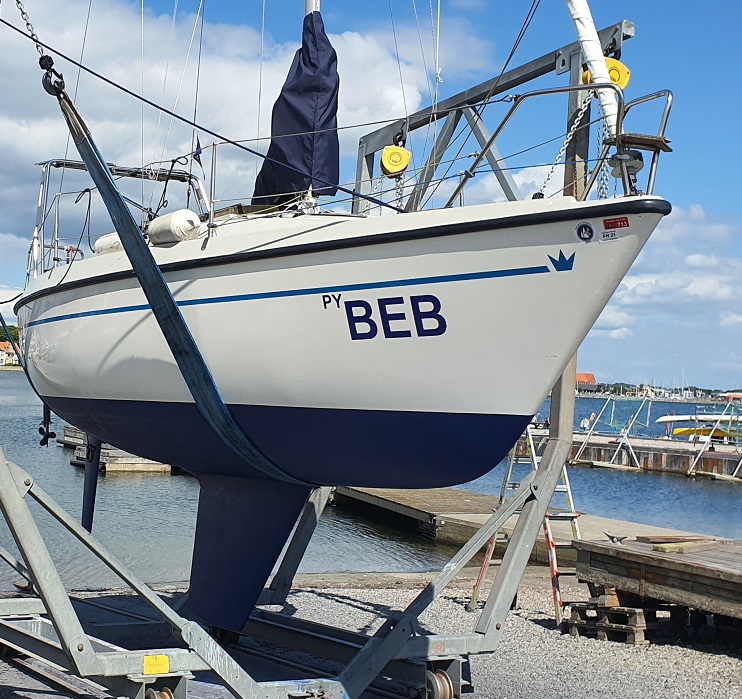Review of Elvstrøm 22 Cruiser
Basic specs.

If you have a photo you would like to share: Upload Image
Looking for a new boat? Find a Elvstrøm 22 Cruiser or similar boat for sale

The Elvstrøm 22 Cruiser is equipped with a fin keel. The fin keel is the most common keel and provides splendid manoeuvrability. The downside is that it has less directional stability than a long keel.
The keel is made of iron. Many people prefer lead keel in favour of iron. The main argument is that lead is much heavier than iron and a lead keel can therefore be made smaller which again result in less wet surface, i.e. less drag. In fact iron is quite heavy, just 30% less heavy than lead, so the advantage of a lead keel is often overstated. As the surface of a fin type keel is just a fraction of the total wet surface, the difference between an iron keel and a lead keel can in reality be ignored for cruising yachts.
The boat can enter even shallow marinas as the draft is just about 1.40 - 1.50 meter (4.59 - 4.89 ft) dependent on the load.
Sailing characteristics
This section covers widely used rules of thumb to describe the sailing characteristics. Please note that even though the calculations are correct, the interpretation of the results might not be valid for extreme boats.
What is Capsize Screening Formula (CSF)?
The capsize screening value for Elvstrøm 22 Cruiser is 2.07, indicating that this boat would not be accepted to participate in ocean races.
Sailing statistics
This section is statistical comparison with similar boats of the same category. The basis of the following statistical computations is our unique database with more than 26,000 different boat types and 350,000 data points.
What is L/B (Length Beam Ratio)?
The l/b ratio for Elvstrøm 22 Cruiser is 2.78.
The ballast ratio for Elvstrøm 22 Cruiser is 50%.
Maintenance
If you need to renew parts of your running rig and is not quite sure of the dimensions, you may find the estimates computed below useful.
| Usage | Length | Diameter | ||
| Jib sheet | 6.7 m | (21.9 feet) | 10 mm | (3/8 inch) |
| Genoa sheet | 6.7 m | (21.9 feet) | 10 mm | (3/8 inch) |
| Mainsheet | 16.6 m | (54.6 feet) | 10 mm | (3/8 inch) |
| Spinnaker sheet | 14.7 m | (48.1 feet) | 10 mm | (3/8 inch) |
This section shown boat owner's changes, improvements, etc. Here you might find inspiration for your boat.
Do you have changes/improvements you would like to share? Upload a photo and describe what to look for.
We are always looking for new photos. If you can contribute with photos for Elvstrøm 22 Cruiser it would be a great help.
If you have any comments to the review, improvement suggestions, or the like, feel free to contact us. Criticism helps us to improve.
